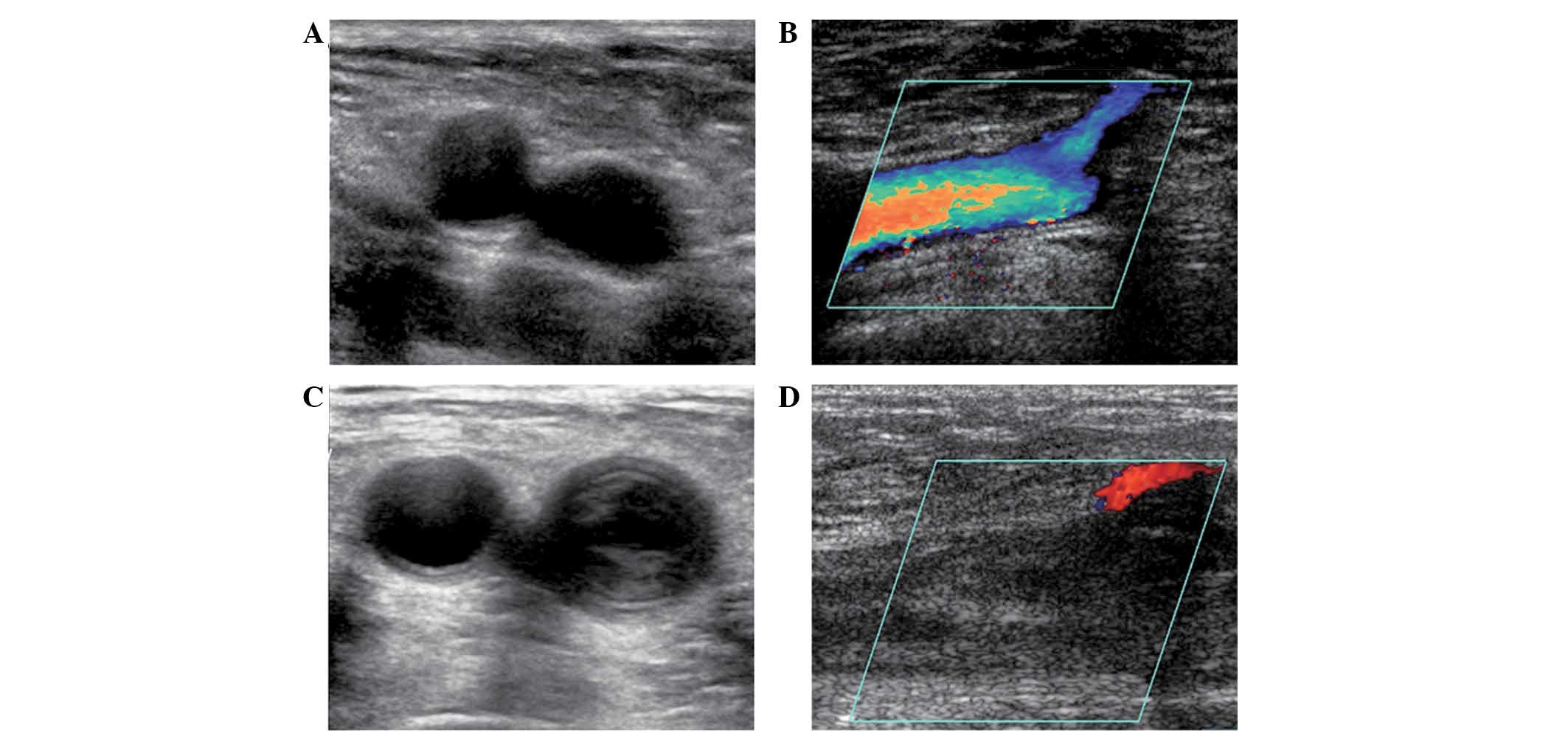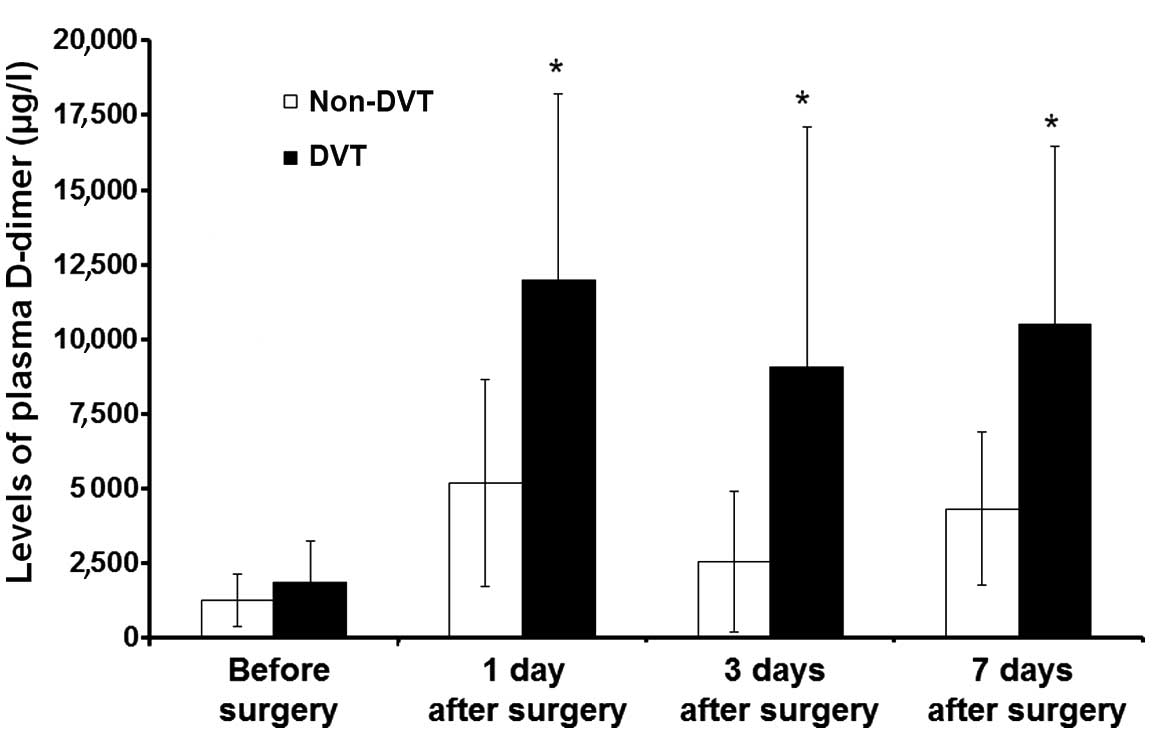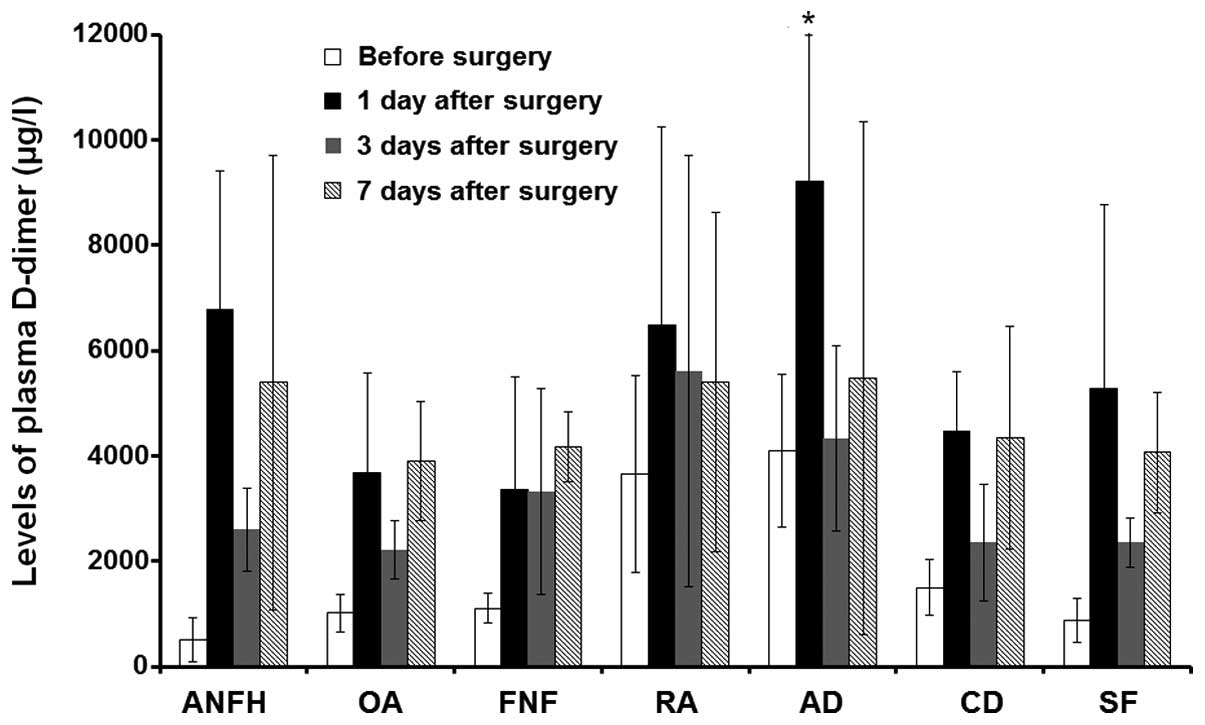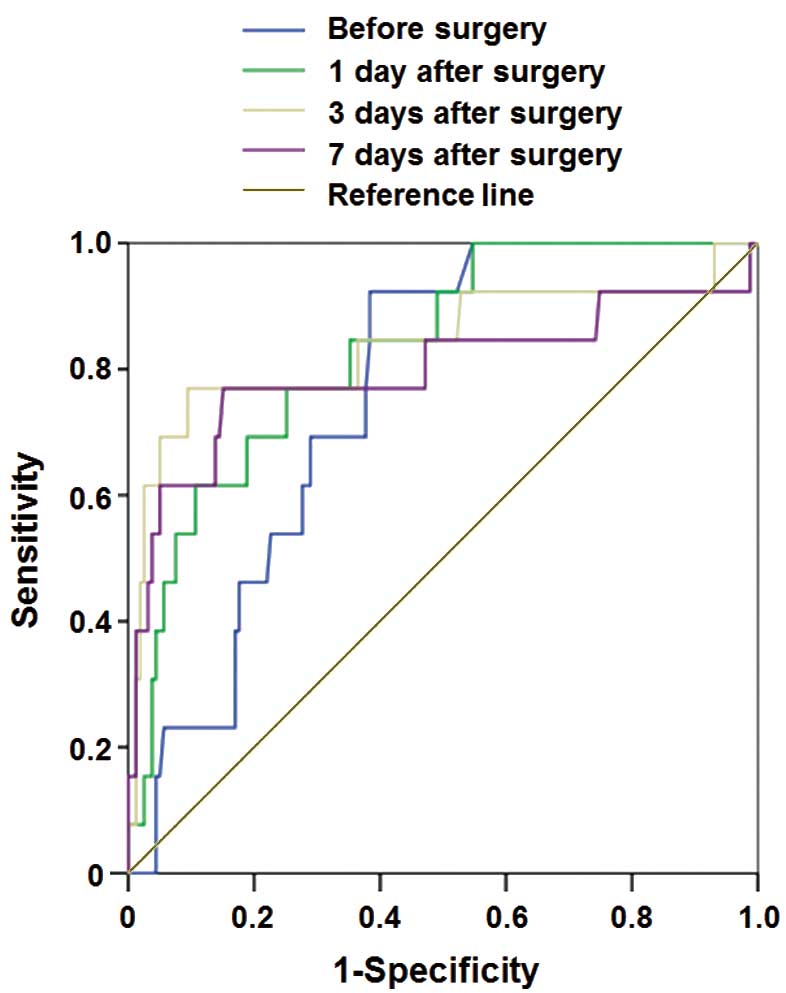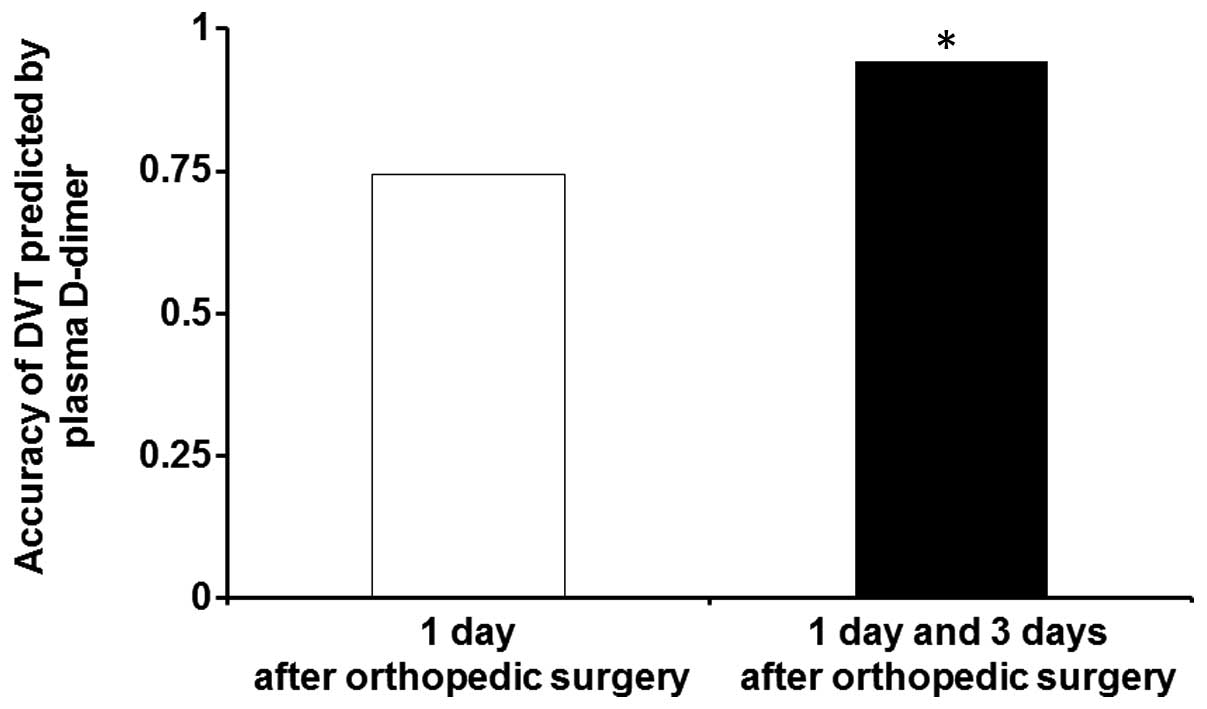|
1
|
Lyle CA, Gibson E, Lovejoy AE and
Goldenberg NA: Acute prognostic factors for post-thrombotic
syndrome in children with limb DVT: a bi-institutional cohort
study. Thromb Res. 131:37–41. 2013. View Article : Google Scholar : PubMed/NCBI
|
|
2
|
Dua A, Neiva S and Sutherland A: Does
previous varicose vein surgery alter deep vein thrombosis risk
after lower limb arthroplasty? Orthop Surg. 4:222–226. 2012.
View Article : Google Scholar : PubMed/NCBI
|
|
3
|
Shah K, Thevendran G, Younger A and Pinney
SJ: Deep-vein thrombosis prophylaxis in foot and ankle surgery:
What is the current state of practice? Foot Ankle Spec. 10:101–106.
2015. View Article : Google Scholar
|
|
4
|
Jeeshan RR, Ahmad M and Graham MTS:
Subclavian vein thrombosis following acute internal fixation of a
clavicular fracture. Shoulder Elbow. 5:108–110. 2013. View Article : Google Scholar
|
|
5
|
Wakabayashi H, Hasegawa M, Niimi R, Naito
Y, Nakagawa T and Sudo A: Clinical analysis of preoperative deep
vein thrombosis risk factors in patients with total hip
arthroplasty. Thromb Res. 136:855. 2015. View Article : Google Scholar : PubMed/NCBI
|
|
6
|
Ozgur ES, Karaca K, Ozye C and Nayci SA:
Does anatomic location of deep venous thrombosis affect the
clinical findings and course in the patient of pulmonary embolism.
Eur Respir J. 38(Suppl 55): 23452011.
|
|
7
|
Mant MJ, Eurich DT, Russell DB and
Majumdar SR: Post-thrombotic syndrome after total hip arthroplasty
is uncommon. Acta Orthop. 79:794–799. 2008. View Article : Google Scholar : PubMed/NCBI
|
|
8
|
Struijk-Mulder MC, Ettema HB, Verheyen CC
and Büller HR: Comparing consensus guidelines on thromboprophylaxis
in orthopedic surgery. J Thromb Haemost. 8:678–683. 2010.
View Article : Google Scholar : PubMed/NCBI
|
|
9
|
Geerts WH, Bergqvist D, Pineo GF, Heit JA,
Samama CM, Lassen MR and Colwell CW: American College of Chest
Physicians: Prevention of venous thromboembolism: American College
of Chest Physicians Evidence-Based Clinical Practice Guidelines
(8th Edition). Chest. 133(6 Suppl): S381–S453. 2008. View Article : Google Scholar
|
|
10
|
Tenna AM, Kappadath S and Stansby G:
Diagnostic tests and strategies in venous thromboembolism.
Phlebology. 27(Suppl 2): 43–52. 2012. View Article : Google Scholar : PubMed/NCBI
|
|
11
|
Molugu C, Fisher G, Hirons B, Hughes D and
Raftery S: P151 V-DimERS Study - Value of D-Dimers in estimating
risk of significant pulmonary embolism and deep vein thrombosis.
Thorax. 68(Suppl 3): A1442013. View Article : Google Scholar
|
|
12
|
Aaron W and Ann V: Is the D-dimer test a
viable option for the detection of PE? J Nucl Med. 55:27082014.
|
|
13
|
Wells P: Overview and comparison of
D-dimer assay kits for DVT and PE. Clin Adv Hematol Oncol.
2:1602004.PubMed/NCBI
|
|
14
|
Lees D, Griffiths P, Paxton C and Wahbi Z:
Can D-dimer assay, together with clinical probability predict
computed tomography pulmonary angiogram (CTPA) outcomes for
pulmonary embolism (PE)? Eur Respir J. 38(Suppl 55): 5822011.
|
|
15
|
Shimoyama Y, Sawai T, Tatsumi S, Nakahira
J and Minami T: Examination of risk factors for deep vein
thrombosis following total hip arthroplasty. Masui. 60:897–902.
2011.(In Japanese). PubMed/NCBI
|
|
16
|
Park Y, Choi H, Kim SH, Kang J, Kang WC,
Shin MS and Moon J: Multisite paradoxical embolisms in a patient
with patent foramen ovale and pulmonary thromboembolism. Int J
Cardiol. 159:e29–e31. 2012. View Article : Google Scholar : PubMed/NCBI
|
|
17
|
Wu O, Clark P, Lowe GD, Walker ID and
Greer IA: Thrombosis: Risk and Economic Assessment of Thrombophilia
Screening (TREATS) Study Group: Thrombophilia and venous
thromboembolism after total hip or knee replacement surgery: A
systematic review. J Thromb Haemost. 3:811–813. 2005. View Article : Google Scholar : PubMed/NCBI
|
|
18
|
Lausen I, Jensen R, Wille-Jørgensen P,
Jørgensen L, Rasmussen M, Lyng K, Andersen M and Raaschou H: Colour
Doppler flow imaging ultrasonography versus venography as screening
method for asymptomatic postoperative deep venous thrombosis.
Original. European Journal of Radiology. 20:200–204. 1995.
View Article : Google Scholar : PubMed/NCBI
|
|
19
|
Magnusson MB, Nelzén O, Risberg B and
Sivertsson R: A colour Doppler ultrasound study of venous reflux in
patients with chronic leg ulcers. European Journal of Vascular and
Endovascular Surgery. 21:353–360. 2001. View Article : Google Scholar : PubMed/NCBI
|















